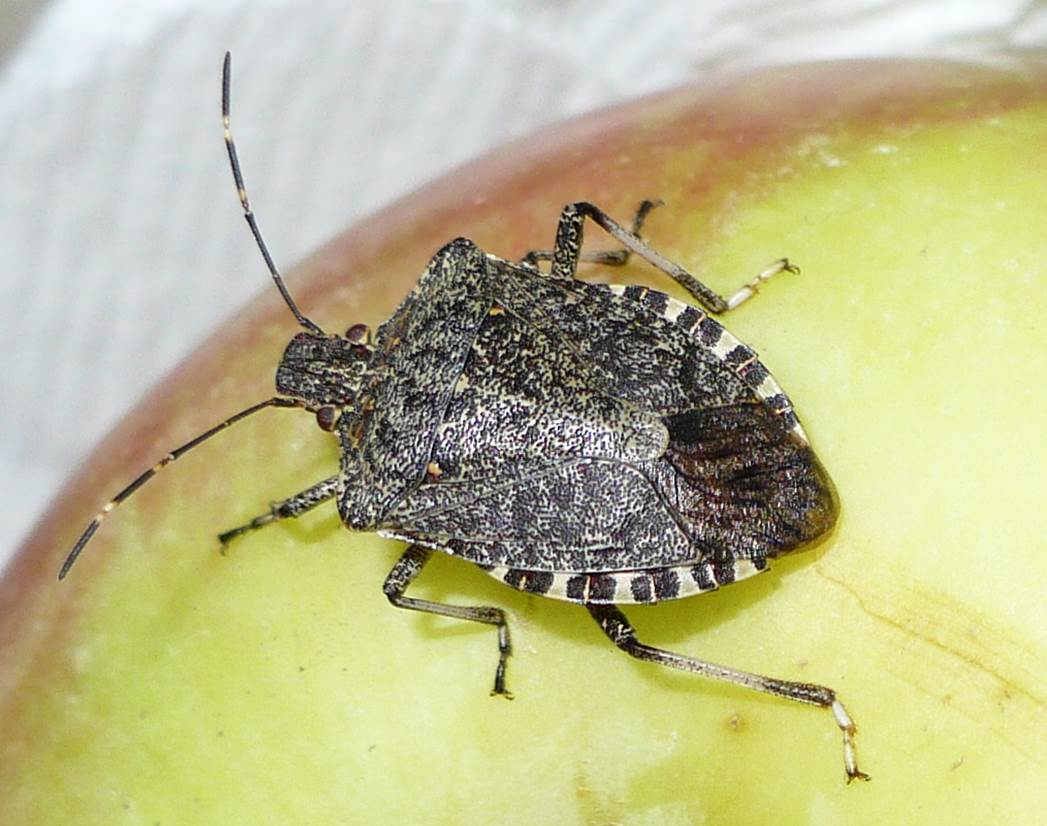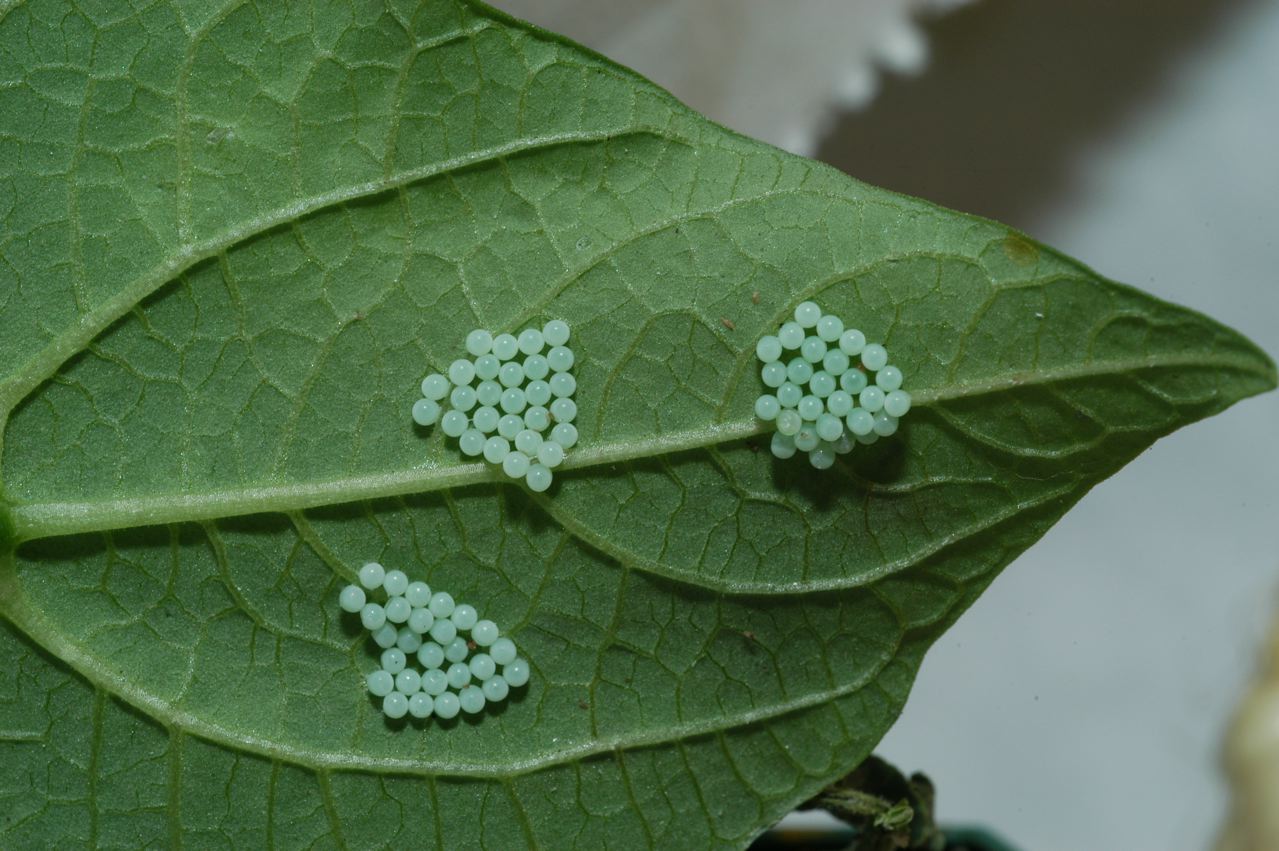Brown Marmorated Stink Bug
General Description
The brown marmorated stink bug (Halyomorpha halys), a native pest of Asia, was first identified in North America in Pennsylvania in 2001. It has since spread throughout the Mid-Atlantic United States and is present in California, Oregon and Washington. It is a very serious pest that feeds on more than 80 different plant species. In 2010, an estimated loss of $37 million due to brown marmorated stink bug (BMSB) feeding was reported by the apple industry in the Mid-Atlantic States. The stink bug is also a nuisance to homeowners as the adults aggregate on and in buildings while seeking warm overwintering sites. This pest was first detected in the Okanagan Valley in 2016 in very low numbers on wild chokecherry along the Penticton Canal and in two residences near downtown Kelowna.
Surveys indicate BMSB is present at very low numbers in most areas except Central (downtown) Kelowna where established and high populations are present.
Growers are asked to report any suspect BMSB to Dr. Susanna Acheampong ([email protected]) or Report Brown Marmorated Stink Bug – Farming, Natural Resources & Industry Forms to confirm the identification of the suspect insect.
Hosts
Adults and nymphs feed on tree fruits, berries, vegetables, grapes and ornamental trees and shrubs. Ornamental hosts in Southern Interior BC include wild chokecherries, maple, lilac, honey locust, tree of heaven, mountain ash, scarlet firethorn, shiny cotoneaster, catalpa, magnolia, snowberry, hazelnut, rose, rose of Sharon, cedar, Virginia creeper, ash, elderberry, gingko, sumac, hops, runner bean, hazelnut, Oregon grape, privet and prickly lettuce.
Damage
Both adults and nymphs feed by inserting their piercing and sucking mouthparts into the flesh of fruit or vegetables. Feeding punctures result in small dead areas on fruit, vegetables and leaves (Figs. 1 & 2). Related native stink bug species also cause similar feeding damage towards the end of the summer.
.jpg)
|
.jpg) |
|
Figure 1. External feeding injury. (Peter Shearer, OSU) |
Figure 2. Internal feeding injury. (Peter Shearer, OSU) |
Identification
Adult: Shield-shaped, 13 – 17 mm long, brown marbled appearance, alternating brown and white markings on the outer edge of the abdomen; can be distinguished from other stink bugs by the presence of distinctive white bands on the last two antennal segments (Fig. 3).
 |
|
Figure 3. Adult brown marmorated stink bug. (BCMA) |
Egg: Spherical, white or pale green, 1.6 x 1.3 mm; laid in clusters of 20 – 30 eggs on the underside of leaves (Fig. 4).
 |
| Figure 4. Clusters of brown marmorated stink bug eggs. (Peter Shearer, OSU) |
Immature (nymph): There are 5 immature stages. Nymphs range in size from 2.4 – 12 mm in length and do not have fully developed wings (Fig. 5). Ist instar nymphs are bright orange to red in colour; 2nd instar nymphs are black, tick-like; later instars are pear-shaped, brown with white markings on abdomen and legs and white bands on last two antennal segments.
.jpg) |
|
Figure 5. Brown marmorated stink bug nymph. (Peter Shearer, OSU) |
Life History
Adults overwinter inside buildings or in protected areas and emerge in early spring. Each female can lay up to 400 eggs throughout the summer on host plants, resulting in overlapping nymphal stages. Eggs hatch in 4–7 days; nymphs mature in about 5 - 8 weeks depending on temperature. One to two generations per year are reported in the United States and up to 6 generations per year in Asia.
Monitoring
Adults and nymphs can be monitored with pheromone baited sticky or pyramid traps. The pheromone traps are good detection tools but current research indicates they do not give precise estimate of BMSB population levels.
Management
Biological Control
Samurai wasps (Trissolcus japonicus), an effective parasitoid of brown marmorated stink bugs in Asia have been found in the United States, Europe, and in British Columbia and Ontario in Canada. Predators of brown marmorated stink bugs include spiders, ladybugs, predatory thrips, lacewings, Deraeocoris species, sand wasps (Astata sp.) and red velvet mite (Balaustium sp.).
Chemical Control
Growers should consult with their packinghouse field service or crop/pest management advisor, or contact the Kelowna BCMA office, before taking action against suspected BMSB infestations.
There are currently no registered products for brown marmorated stink bug control in tree fruits in Canada.
